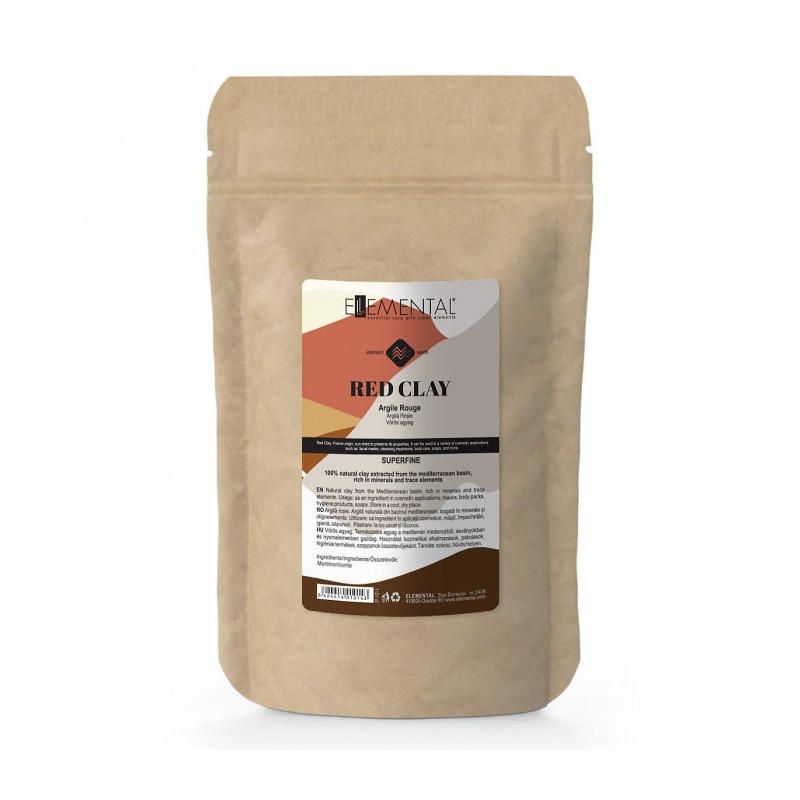





Red Montmorillonite clay is prized for its cleansing, detoxifying and balancing properties. Clay attracts toxins, bacteria and sebum and helps to balance the skin's natural oil production. In soap, clay is mainly used to tone the soap.
The composition of red clay is as follows:
Red Montmorillonite clay, often also known as red French clay, is a type of bentonite clay that is valued for its cleansing, detoxifying, and balancing properties. Like all types of bentonite clay, red Montmorillonite clay has a strong negative charge. This allows it to attract positively charged toxins, bacteria, and sebum residues. The clay helps to balance the natural sebum production of the skin. This makes the clay suitable for both oily and dry skin types.
Red French clay is gently exfoliating, helping to remove dead skin cells and promote the growth of new skin cells. The minerals in the clay help to revitalize and refresh the skin, giving it freshness and glow. The soothing properties of the clay can alleviate inflammation and irritation on the skin.
In melt-and-pour soap, clay is used in small amounts and its main task is to color the soap. Clay does not dissolve in soap, but mixes with it, so the soap remains slightly speckled.
As the melt-and-pour soap base is liquid, the heavier clay particles sink to the bottom of the mold and the lower part remains more speckled and darker. The color is most intense in transparent soap, but soap becomes opaque due to the clay particles. In the white soap base, the color remains pastel due to the white color of the soap.
In homemade soap, the color remains very natural and subtle, the clay particles distribute more evenly due to the thickness of the soap mixture and do not sink as easily to the bottom. The addition of clay slightly reduces the foam of the soap, so it cannot be overdone. We recommend using 2-3 tablespoons of clay powder per kg of soap. You can find the shea butter clay soap recipe on the Relumee blog.
Data sheet